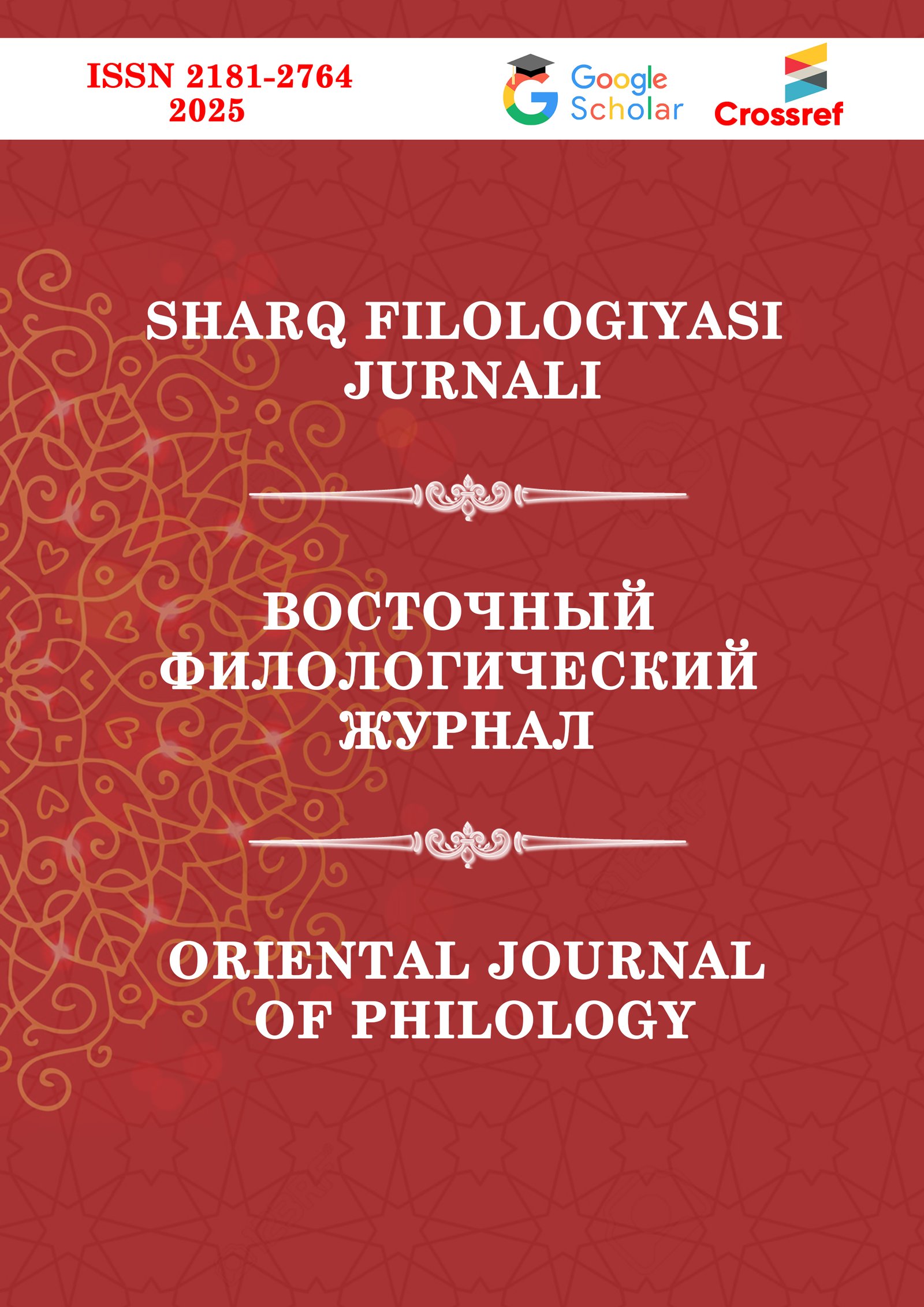 Articles
| Open Access |
DOI:
https://doi.org/10.37547/supsci-ojp-05-03-16
Articles
| Open Access |
DOI:
https://doi.org/10.37547/supsci-ojp-05-03-16
TIPES OF “MAF ’UL BIHI” IN ARABIC LANGUAGE
Buzahro M. Begmatova ,Abstract
Accusative case completes the action of the verb in meaning and answers the questions such as "Who?", "What?", "Who from?", "From what?" It is divided into object of a transitive verb and adverbial object. Object of a transitive verb answers the questions "who?" and “what?” known as المفعول به and comes after subject and predicate. It should be noted that the famous linguist Mustafa Gallaini, in contrast to other modern scientists, in his book "جامع الدروس العربية" distinguishes two types of accusative(cognate and hidden) and divides them into several species. Also, in the aforementioned book of the scholar, there are many other sources of information about object of a transitive verb. "Masdar muwwal" or "jumlah mu'awwal" are can be examples of this.
Keywords
Cognate and circumstantial accusative case, maful bihi - object of a transitive verb, maful mutlaq, maful fihi - cognate accusative and hidden accusative, masdar muawwal, Jumlah muawwal.
References
Abdujabborov, A. (2007). Arabic language. Arab tili. – Tashkent: Tashkent islamic university. – 307 p. (in Uzbek).
Begmatova B.M., Mutalova G.S., Kasimova S.S. (2023). The direct object and its use in arabic language. Boletin De Literatura Oral - The Literary Journal, Vol. 10 No. 1 (2023). (Scopus Q3). PP. 3601-3609. https://www.scopus.com/sourceid/21100810884.
Begmatova. B.M., Kasimova S.S. (2022). Study of the problem of predicativity and attribution in languistics. Central European Management Journal Vol. 30 Iss.3. PP.2242-2247. https://mjl.clarivate.com/search-results.
Begmatova B.M., Mutalova G.S., S.Korayem, Sh.Shamusarov, N.Saidova, (2024). Calling for the Use of Intermediate Language in Teaching Arabic to Non-Native Speakers, Its Foundations and Problems / Power System Texnology Journal, Том 48, № 4 (Scopus Q1) PP. 2221-2236. ISSN: 1000-3673. https://powertechjournal.com/index.php/journal/issue/view/28
Grande, B.M. (1998). Course of Arabic grammar in comparative-historical light. Kurs arabskoy grammatiki v sravnitel'no-istoricheskom osveshenii. – Moscow: RAN. – 592 p. (in Russian)
Ibragimov, N., Yusupov, М. (2009). Arabic grammar. Arab tili grammatikasi. – Namangan: Ibrat. – 563 p. (in Uzbek).
Nosirova, М.А. (2005). Mahmud Zamakhshari‘s treatise Al-Unmuzaj. Mahmud Zamaxshariyning “Al-Unmuzaj fi-n-nahv” risolasi. – Tashkent: Uzbekistan. – 186 p. (in Uzbek).
Sayyed Sharif Djurjaniy. (1997). Nahvi Mir. Nahvi Mir. – Karachi: Pakistan. – 78 p. (in Arabic).
Sheikh Al-Ghalayni, M. (2007). Collection of Arabic Lessons. Ash-Shayx al-G‘alayiyniy, Mustafa. Jami’ ad-durus al-arabiyya. – al-Qahira: Dar al-g‘ad al-jadid. – 590 р. (in Arabic).
Nemah, Fouad. Summary of Arabic Grammar Rules. (1998). Mulaxxas qava’id al-lug‘a al-arabiyya. – Misr: Nahdat Misra. – 855 p. (in Arabic).
Mahmud Zamakhshari. (1987). Example in grammar. Al-Unmuzaj fi-n-nahv. – al-Qahira: Misr. – 40 p. (in Arabic).
Nasif, Khifni et al. Grammar lessons (2006). ad-Durus an-nahviyya. – Misr, al-Iskandariyya: Dar al-Aqida. – 415 p. (in Arabic)
Article Statistics
Downloads
Copyright License
Copyright (c) 2025 Buzahro M. Begmatova

This work is licensed under a Creative Commons Attribution 4.0 International License.

